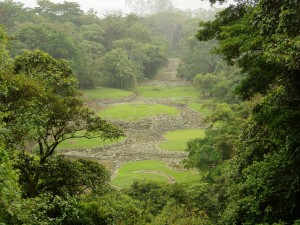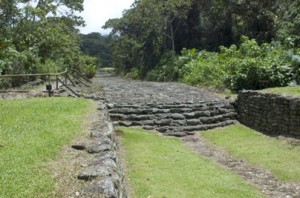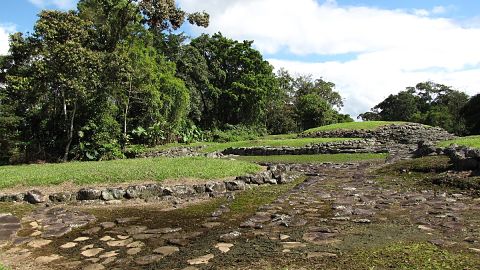Costa Rica News – About 1,500 years ago, an ancient people built a road as wide and solid as a modern highway through the middle of Costa Rica’s rain forest. It must have been a challenge for the naked hunters and gatherers, who aren’t believed to have had beasts of burden or anything resembling wheels. But somehow they also built elaborately engineered aqueducts to bring water from distant mountains to a city that covered kilometers. The system still runs perfectly, despite almost daily earthquakes.
 The civilization that built it, however, disappeared 1,000 years ago.
The civilization that built it, however, disappeared 1,000 years ago.
I’d been haunted by these mysteries for a decade, ever since an archeologist led me to the lost city of Guayabo in Costa Rica’s mountains.
So on a return visit to Central America last winter, I went in search of answers. And I discovered that even though the site is now part of a national park, exploring it is still such an Indiana Jones experience that it remains virtually unknown. What experts can say for sure is that the city was a crossroads between the Mayan and Inca empires, and that the jungle swallowed up their traces long before the Spaniards settled Costa Rica.
“We’re left with four basic questions: Where did they come from? How did they live? Who built these structures? And what happened to them?” says Jorge Solano, one of a few guides in the area certified to lead visitors around Guayabo.
He’s got a four-wheel-drive, the best choice for the steep climb up a mountain to an elevation of 1,300 metres. While the site’s just 18 kilometres northeast of the modern city of Turrialba, it can take an hour to reach.
Few people live around the park, and it’s simple to see why. The shattered remains of earthquake-smashed wooden homes litter steep mountain slopes; the regular shaking and heaving has raised areas and sunk others, leaving the hills with a washboard look. In some places, an entire lane of the road through has fallen away into the deep valley, and at one point there’s a wide split in the pavement where a fault line recently cracked open.
For the last kilometre, the road turns into a gravel trail.
At the entrance to the Guayabo National Monument, a hut houses a diorama of what the area might have looked like in its heyday, around 600 AD. Huge stone circles are believed to be the foundations of barn-shaped and conical buildings built of wood and thatch. Some would have been more than four storeys tall, but not one fragment of wood remains today thanks to hungry termites and leaf-cutter ants.
We trek uphill through the rain forest, along narrow trails that snake between enormous trees wrapped with vines and orchids and home to toucans and monkeys. At one point, Solano points to what appears to be a couple of twisted black vines: “Two boa constrictors mating.”
We pass excavated stone tombs that contained elaborately painted pottery and jade knives. (Today they’re in museums.) Rocks along the trail are decorated with carvings that feature images of jaguars, alligators and wide-eyed gremlin faces.
No discernible writing has ever been found. But the roadway is a clear indication that serious engineers once  lived here.
lived here.
You come across it after hiking for about 20 minutes; an unearthed section runs for about half a kilometre in a clearing. It is more than eight metres wide – think of a major city thoroughfare – with a metre-thick base of huge stones snugly fit together and a flat, level surface. It is much better built, and much smoother, than the road we took to get here, one built with the benefit of modern earth-moving equipment.
Radar images have traced stone trails radiating from here across Costa Rica. A preliminary dig at Mercedes, another lost city, has also produced evidence of a broad stone “causeway” similar in width, but less well preserved.
What purpose could this broad roadway in Guayabo have served?
Then a thought occurs to me: You could land a plane on this. Far-fetched as it seems, the theory fits with other unexplained artifacts from Central and South America that I’ve seen in museums – decorative ornaments in gold or silver, whose shapes resemble aircraft. The objects, which have stubby rounded wings and tails like a modern airplane, are estimated to have been cast in a period between 500 and 800 AD.
That makes them contemporary with Guayabo.
Intriguingly, the broad road ends at the edge of the settlement, where a series of steps leads into a big enclosure that today is known as the toll booth. It’s believed this high walled area was where incoming goods were inspected and appropriate gifts were given to the chiefs of the city. That sounds a lot like customs and immigration to me, even though no one’s ever found a Mayan passport. It’s just my speculation, mind you. I’ll leave theories about the chariots of the pre-Columbians to the experts.
Still, I remain haunted: Could the early Costa Ricans have been a lot more advanced and well travelled than we give them credit for today?
WALLACE IMMEN – TURRIALBA, COSTA RICA — The Globe and Mail

